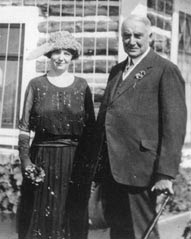
“Arizona Charlie” had a dance hall in Dyea in the goldrush. He also had a saloon at Stone House and then a Grand Opera House in Dawson. He was born in Visalia California in 1860. Charlie was tall, dashing, and flamboyant. He wore a flowing moustache and long hair, in the manner of the Wild West showman he was. He had a dozen careers and a thousand schemes. Occasionally, one paid off. He prospered during the Klondike gold rush. Charlie’s Grand Opera House, now called the Palace Grand Theater, is a landmark in downtown Dawson City. He was a legendary sharpshooter in Buffalo Bill’s Wild West Show.
He apparently bled to death on this date, December 9, 1932 in Yuma Arizona while operating on his own vericose veins w/pocket knife.
lots more on Charlie at Wickenburg-az.com; Frank Norris 1986 article








